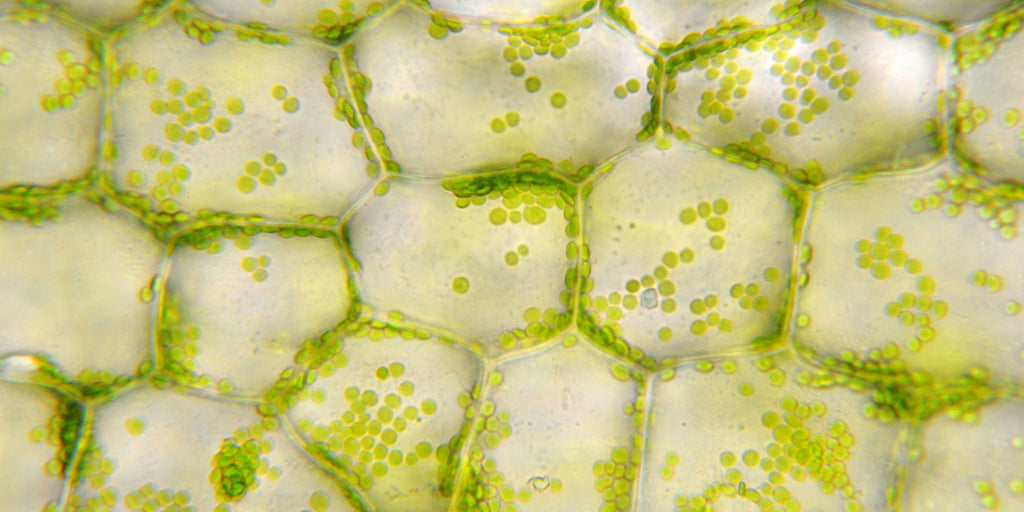The Ugly Truth About The Science of “Stem Cell” Skincare (What Big Beauty Isn’t Telling You)

They call it the “next frontier of youth.”
The ingredient that “activates regeneration.”
The miracle drop that “replicates stem cell therapy in a jar.”
You see it everywhere: “Stem cell serum, stem cell cream, exosome stem cell complex.” Every brand wants the prestige of that sciencey label.
But here’s the question no one wants to ask:
👉 Are those claims real—or is “stem cell skincare” just the prettiest marketing lie there is?
Because behind the buzzwords lie problems: money wasted, skin stress, and false hope. Women over 50, 60, 70—especially those with reactive, thinning skin—have a lot to lose chasing hype.
Let’s dive in.
What "Stem Cell" Skincare Promises
When a brand advertises “stem cells” in a cream, here’s what they want you to believe:
-
That stem cells in the product will regenerate your skin from deep down
-
That they can reprogram aging cells
-
That they deliver miracle “renewal” from within
-
That it’s comparable (in effect) to medical stem cell therapy—only simpler, safer, topical
It’s seductive language. It sounds like science. It feels like possibility. But in practice, it’s often distortion.
The Evidence (and Why It Fails in Real Skin)
Here’s where the marketing cracks under science. I’ll drop real studies, then explain in plain language so you (and your skin) can understand what’s going on.
1. Stem Cells in Creams Don’t Survive
A recent review on regenerative topical skincare showed how difficult it is to grow or maintain actual stem cells in cosmetic formulations.
-
Translation: You can’t keep live stem cells alive in a cream. They require very controlled conditions—nutrients, temperature, isolation—that you’ll never get in a jar.
So when a label says “stem cell technology,” chances are you’re getting dead cells, extracts, or just the name.
2. Plant Stem Cells ≠ Human Regeneration
Multiple peer-reviewed sources show that plant stem cell extracts may offer antioxidant or protective benefits, but they do not convert into human cells.
-
Translation: Think of plant stem cells like watchdogs—not builders. They can defend and help reduce stress, but they can't become human skin.
It’s like buying a tomato plant and expecting it to turn into a tree. It’s different biology.
3. Penetration & Delivery is a Major Barrier
Beauty marketing often implies that stem cell molecules penetrate deep and work on your DNA. But dermatology experts warn: topical stem cell applications are minimally studied and their benefit is not established.
Stem cell creams cannot influence human stem cells—they can’t even reach them.
The skin barrier is a brick wall. Most big, complex molecules (like proteins or “stem cell factors”) don’t slip past. So all that fancy messaging? Likely surface-level.
4. The “Exosome / Conditioned Media” Trap
Some brands shift language from “stem cells” to “exosomes” or “conditioned media” — trying to sound more subtle, more biotech. But exosomes are just bubbles carrying signals—not stem cells.
-
Translation: Exosomes are like message carriers—not living factories. They can suggest change. They can’t build tissue. They're helpers, not master builders.
In cosmetics, they suffer the same issues: stability, dosage, penetration, formulation.
5. The Industry Hype Machine Knows This
A major review of the cosmetic industry calls the hype around stem cells a capitalized marketing phenomenon — a “miracle fantasy.”
Brands cash in on the public’s hopeful longing for youthful skin. And because regulations are weak, many claims go unchecked.
-
Translation: It’s not just naïve. It’s a system built for creating illusions—then charging premium prices for them.
Why This Matters Now More Than Ever
Your skin isn’t the same as when you were 30. It’s:
-
More fragile
-
Less resilient
-
Slower to recover
-
More reactive
-
Barrier-weakening over time
If you slap a “stem cell” cream on and it doesn’t perform—or worse, irritates—you’re not just disappointed. You might be damaging the very skin you’re trying to fix.
Chasing those hype ingredients often means layering more stuff to cover the damage. That’s how you spiral into “repairing damage from your own routine.”
What Actually Works (and Why We Chose It)
Let’s stop chasing fantasy. Let’s build something real—skin you can trust. Here's our foundation:
-
Barrier repair, first. The skin barrier is your foundation. Repair it and your skin can handle everything else.
-
Smart actives (not sweeping promises). Use validated peptides, antioxidants, gentle hydrators.
-
No overload. Stop layering conflicting ingredients. Let the chemistry work, not fight.
-
Consistency over intensity. Two steps, twice a day, daily. Slow, real change beats flashy promises.
-
Transparency. No magic words. No hidden processes. You deserve to know what’s in the jar.
This is how you get skin that behaves well without makeup—not by waking up with a miracle, but by building strength day after day.
Final Thoughts
“Stem cell skincare” sells hope, not results.
It wraps science in illusion.
It promises miracles and delivers confusion, inflammation, and disappointment.
But your skin does deserve better than marketing fairy tales.
You deserve a system that supports, not pressures.
You deserve ingredients that help—without hype.
You deserve skin that makes makeup optional—not mandatory.
When your skin is truly balanced, you don’t need stem cell fantasies.
Just trust. Simplicity. Consistency.
Sources
-
A. F. Taub et al., “Regenerative topical skincare: stem cells and exosomes,” PMC, 2024. PMC
-
V. Gardiki et al., “Plant Stem Cells in Cosmetic Industry,” MDPI, 2025. MDPI
-
S. Trehan et al., “Plant Stem Cells in Cosmetics: Current Trends and Future Directions,” Future Science OA, 2017. Rutgers University
-
B. S. Al‑Sowayan et al., “The stem cell hype in skincare,” PMC, 2021. PMC
-
“Stem cells applied topically: data minimal, benefit unestablished,” DermatologyTimes. Dermatology Times
-
“Stem Cells in Skin Care: What Are They and What Do They Actually Do?” Paula’s Choice. Paula's Choice
-
“Plant Stem Cells in Cosmetic Preparations,” Walsh Medical Media. walshmedicalmedia.com
